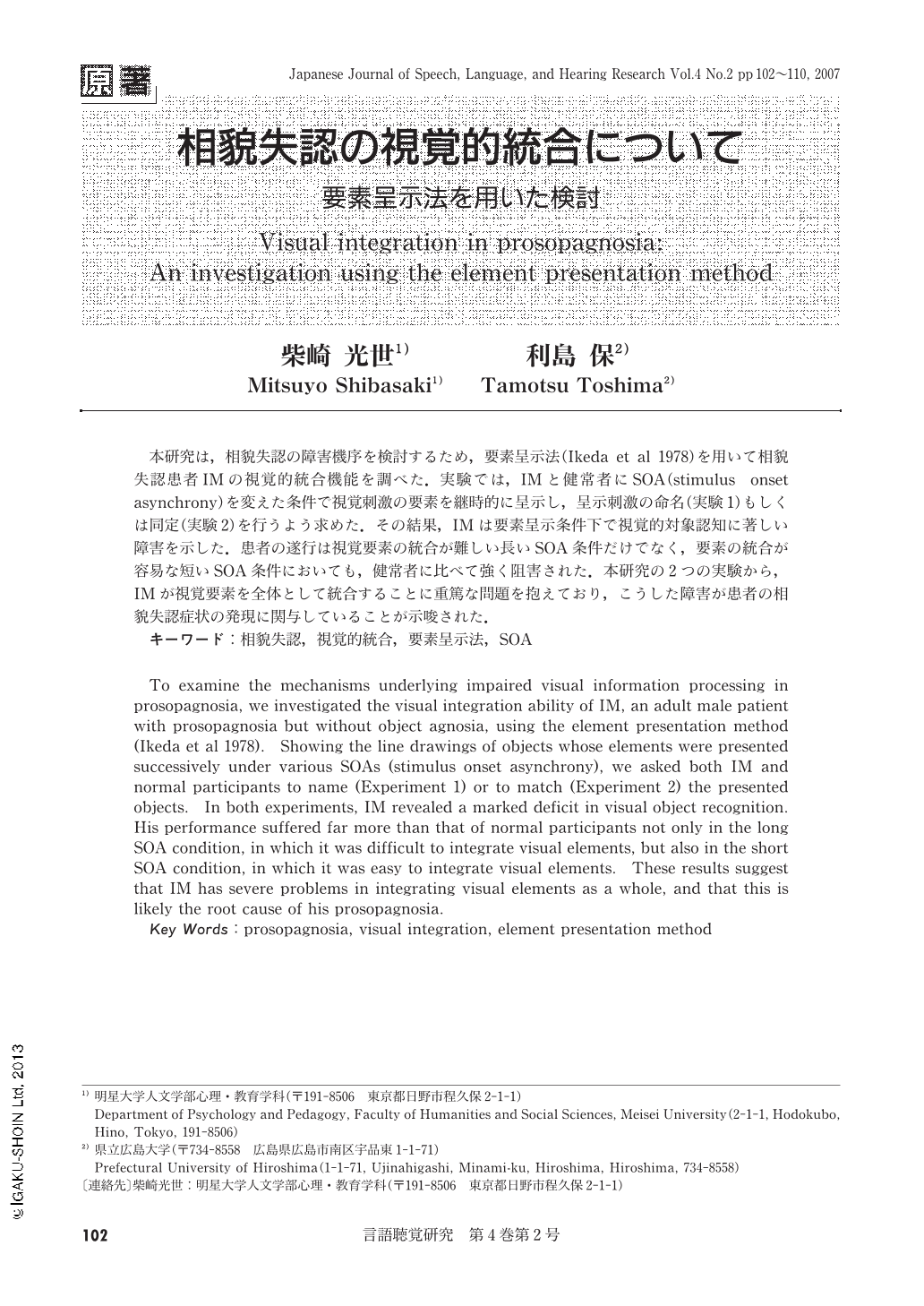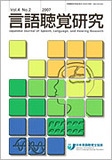Japanese
English
- 有料閲覧
- Abstract 文献概要
- 1ページ目 Look Inside
- 参考文献 Reference
本研究は,相貌失認の障害機序を検討するため,要素呈示法(Ikeda et al 1978)を用いて相貌失認患者IMの視覚的統合機能を調べた.実験では,IMと健常者にSOA(stimulus onset asynchrony)を変えた条件で視覚刺激の要素を継時的に呈示し,呈示刺激の命名(実験1)もしくは同定(実験2)を行うよう求めた.その結果,IMは要素呈示条件下で視覚的対象認知に著しい障害を示した.患者の遂行は視覚要素の統合が難しい長いSOA条件だけでなく,要素の統合が容易な短いSOA条件においても,健常者に比べて強く阻害された.本研究の2つの実験から,IMが視覚要素を全体として統合することに重篤な問題を抱えており,こうした障害が患者の相貌失認症状の発現に関与していることが示唆された.
To examine the mechanisms underlying impaired visual information processing in prosopagnosia, we investigated the visual integration ability of IM, an adult male patient with prosopagnosia but without object agnosia, using the element presentation method (Ikeda et al 1978). Showing the line drawings of objects whose elements were presented successively under various SOAs (stimulus onset asynchrony), we asked both IM and normal participants to name (Experiment 1) or to match (Experiment 2) the presented objects. In both experiments, IM revealed a marked deficit in visual object recognition. His performance suffered far more than that of normal participants not only in the long SOA condition, in which it was difficult to integrate visual elements, but also in the short SOA condition, in which it was easy to integrate visual elements. These results suggest that IM has severe problems in integrating visual elements as a whole, and that this is likely the root cause of his prosopagnosia.

Copyright © 2007, Japanese Association of Speech-Language-Hearing Therapists. All rights reserved.


